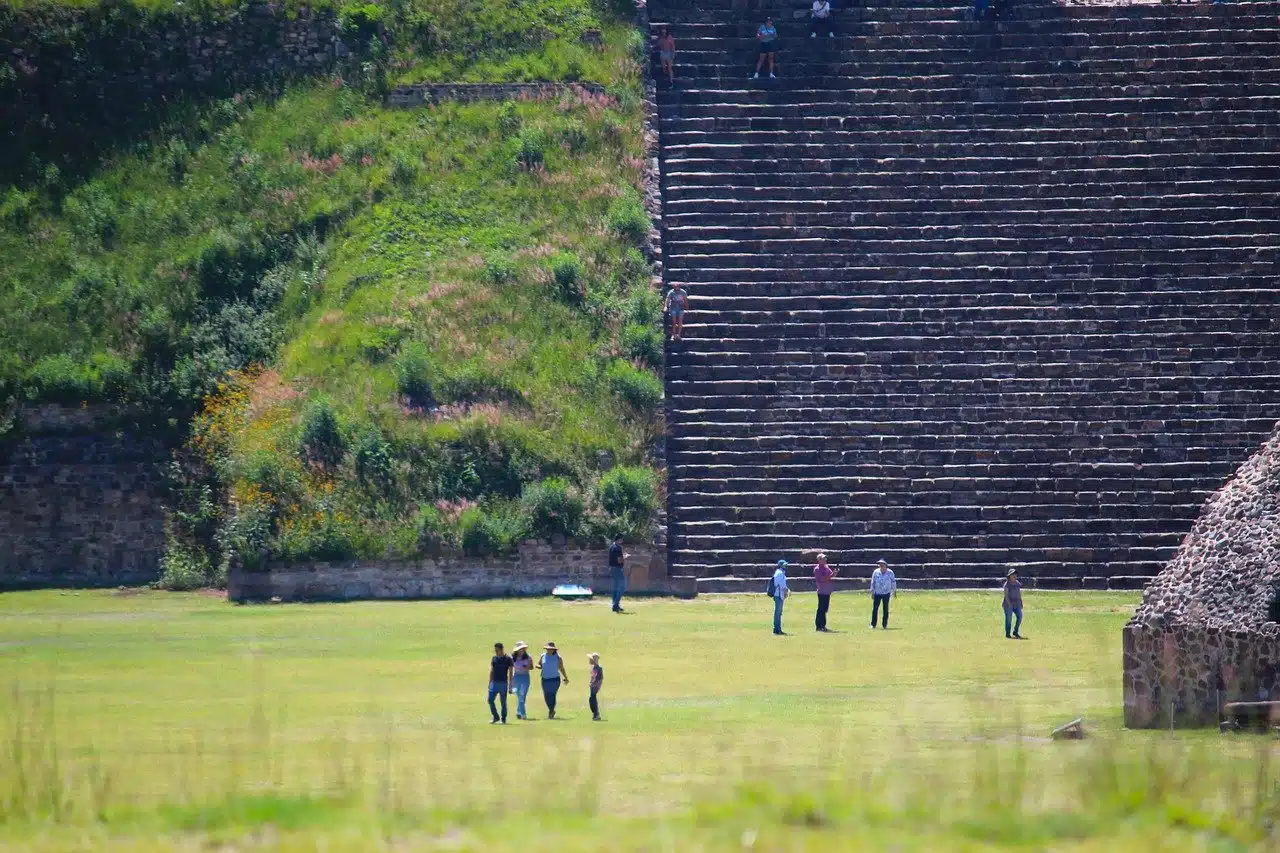
The staircase is a wide staircase, which facilitates communication between two points.
A staircase is a large staircase that usually has prominent ornamentation or artistic style.
Overview
Stairs are usually located in the lobby or on the outside of a building. Like any staircase, it is made up of rungs or steps that allow you to go up and down.
The main function of stairs is to communicate places that are located at different heights . In the case of stairs, due to their dimensions, they allow several people to use them simultaneously.
A staircase can have rest areas. These are plateaus that interrupt the succession of steps.
Stairs are a resource used throughout the world for a long time. In some cases, these structures are a tourist attraction in themselves or a symbol of their region. Many of them are found in public spaces or in areas of mass use .
Hieroglyphics Staircase
The Hieroglyphic Staircase is one of the most prominent and significant structures at the archaeological site of Copán, Honduras . It is a staircase carved in stone found in the Acropolis, one of the main areas of the ancient Mayan city of Copan.
The staircase is adorned with an impressive set of Mayan hieroglyphs carved into its steps and adjacent structures. These hieroglyphs are considered some of the most complex and detailed found in the Mayan world, and have been of great importance for understanding the history and culture of this civilization.
Its hieroglyphs represent a historical and genealogical narrative of the rulers of Copán, including the description of their achievements, lineages and important events . There are also figures and glyphs related to Mayan mythology and cosmology. Its study and interpretation has been fundamental to understanding the chronology and political organization of Copán, as well as to reconstruct its history. Advances in Mayan epigraphy have made it possible to decipher a large part of these texts, which has contributed significantly to our knowledge of the Mayan civilization.
Staircase of Santa María del Monte
The Staircase of Santa María del Monte began to be built at the beginning of the 17th century in Caltagirone , Italy . It was developed to facilitate the passage to the old part of the city, which was at the top of the mountain.
During the middle of the 15th century, the expansion of Caltagirone was considerable. Given its structure at different altitude levels, communicating its various zones became especially difficult. To address this phenomenon, the construction of this staircase began in 1606, directed by Giandomenico Gagini .
Teruel Stairs
The Escalinata de Teruel, also known as the Escalinata del Óvalo , is an impressive monumental staircase that connects the Plaza del Torico, in the historic center of Teruel, with the upper part of the city. The design of the staircase was carried out by José Torán in the 1920s, as part of the city's urban renewal plan.
It is characterized by its elegant neo-Mudejar RF style , which is a combination of Mudejar architectural elements (of Arab influence) and modern elements. It is built of stone and has a semicircular shape, adapting to the topography of the hill on which Teruel is located.

Some staircases date back several centuries.
The Teruel Staircase consists of 155 steps and is flanked by balustrades and planters with benches . In the center it has an ornamental fountain with decorative tiles . Throughout the climb, you can enjoy beautiful panoramic views of the city and its surroundings.
This monument has been a meeting point and an emblematic place for the inhabitants of Teruel and visitors. In addition to its aesthetic and architectural value, it has an important symbolic and cultural meaning for the city.
